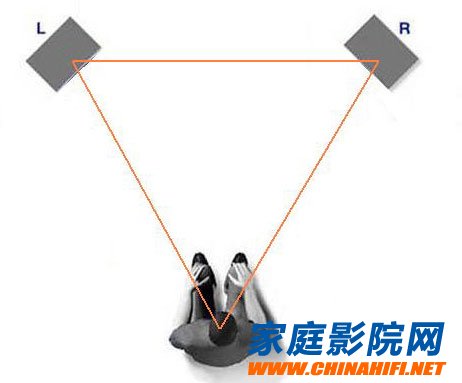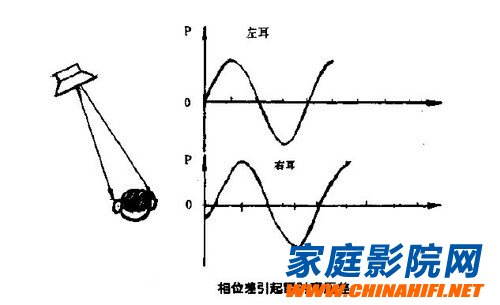1 stereo concept

Stereo is a geometric concept that refers to things that occupy position in three-dimensional space. So is the sound stereo? From an analogy, the answer can be yes. Because the sound source has a solid spatial position, the sound has a solid source of orientation, and people's hearing has the ability to distinguish the position of the sound source; especially when there are multiple sound sources simultaneously, people can perceive the distribution of sound groups in space. situation. Therefore, it can be said that the sound is "stereoscopic". However, it is more appropriate to say: "The original sound is three-dimensional." Because when the sound is recorded and enlarged, and then reproduced, all the sounds can be released from a speaker. Not stereoscopic. At this time, since various sounds are emitted from the same speaker, the original sense of space - especially the spatial distribution of the sound group - disappears. This kind of playback sound is called "Mono." If the playback system can restore the spatial sense of the original sound to a certain extent, then the playback sound is called "Stereo". Because the original sound is not spoken Yu is "stereo", so the term stereo refers to the kind of replay sound that has some sense of space (or sense of orientation).
2 binaural effect
In order to restore the sense of space in the playback sound, it is first necessary to understand why the human auditory system has the ability to discern the orientation of the sound source. The study found that this is mainly because people have two ears and not just one ear.
The ears grow on the sides of the skull. They are not only in space but also blocked by the skull, so the sounds received by the ears may vary. It is mainly based on these differences that enable people to distinguish the location of the sound source in space. These differences are mainly as follows:
(1) The time difference between the sound reaching both ears
Because there is a certain distance between the left and right ears, the sound coming from the front and the back is in danger, and the time from the other directions to the ears is sequential, resulting in a time difference. If the sound source is to the right, the sound must first reach the right ear and then the left ear; otherwise, it must first reach the left ear and then the right ear. The more the sound source is biased to one side, the greater the time difference. Experiments have shown that if the time difference between the ears is artificially caused, the illusion of the sound source bias can be generated. When the difference reached 0.6ms or so, I felt that the sound came completely from one side.
(2) The sound level difference between the two ears
Although the distance between the two ears is not far, the sound level of the sound reaching the two ears may be different due to the blocking effect of the skull on the sound. The sound level near the side of the sound source is larger, while the other side is smaller. Experiments have shown that the maximum sound level difference can reach about 25dB.
(3) The phase difference between the sound and the two ears

Everyone knows that sounds travel in waves, and the phases of sound waves at different locations in space are different (unless they are just one wavelength apart). Since the ears have a distance in space, the phase of the sound waves when they reach both ears may be different. The tympanic membrane in the ear vibrates with sound waves, and the phase difference of this vibration becomes a factor in determining the orientation of the sound source. Experiments have shown that even if the sound level and time are the same when the sound reaches both ears, only the change is the same, only the phase is changed, we also feel that the sound source orientation is very different.
(4) The timbre difference when the sound reaches both ears

If the sound wave comes from a certain direction on the right side, you must bypass some parts of the head to reach the left ear. It is known that the diffraction ability of a wave is related to the ratio between the wavelength and the obstacle scale. The diameter of the human head is about 20 cm, which is equivalent to the wavelength of the 1,700 Hz sound wave in the air, so the human head has a masking effect on the sound component of more than a thousand Hertz. . That is to say, the ability of each component in the same sound to bypass the head is different, and the higher the frequency, the greater the component attenuation. Then the tone heard by the left ear is different from the tone heard by the right ear. As long as the sound is not coming from the positive direction, the sounds heard by the two ears will be different, which will become a basis for people to determine the sound source orientation.
(5) Differences between direct sounds and frontal reflection sound groups
The sound emitted by the sound source, in addition to the direct sound that reaches our ears directly, is reflected by the surrounding obstacles one or more times to form a reflected sound group, which gradually reaches people's ears. Therefore, the difference between the direct sound and the reflected sound group will also provide information on the spatial distribution of the sound source.
(6) Differences caused by the auricle
The auricle is forward, which clearly makes it possible to distinguish between front and back. On the other hand, the shape of the auricle is very subtle, and the sounds from different orientations will have complex effects in it, and certainly provide some orientation information.
Practice has proved that the above differences, the sound level difference, time difference, phase difference three have the greatest impact on auditory positioning. However, their effects are different under different conditions. Generally speaking, in the low and medium frequency bands of audio, the effect of phase difference is large; the middle and high frequency bands are mainly dominated by the difference of sound level. For the snoring sound, the effect of the time difference is particularly significant. In terms of vertical positioning, the role of the auricle is more important. In fact, the binaural effect is comprehensive, and people's auditory system should be based on the comprehensive effect to determine the orientation of the sound source.
By the way, people's auditory system has many other effects besides the feelings of loudness, tone, and orientation. One of them is closely related to our future lectures, called the “priority effect†(also known as the “Haas effectâ€). It is known from experiments that when two identical sounds, one of which has been delayed and reached people's ears, if the delay time is within 30ms, people will not feel the existence of prolonged democracy. Perceived changes in tone and loudness. But if the delay is too long, the situation will be different. As you already know, when the time difference between two successive arrivals exceeds 50ms-60ms (equivalent to a difference in sound path greater than 17m), the listener can feel it.
100,000 home theaters
Ceiling fans with light are ideal. Ceiling fans with light provide the best two benefits: temperature and light control. Ceiling fans with light are an excellent solution for the dual purpose of air dispersion and cooling as well as maintaining your lighting needs. The function of Ceiling Fan is very practical, the Ceiling Fan With Light adds a modern breath for your space. Combining fan and light can refresh any room without having to turn on the air-conditioning.
Ceiling Fan With Light
Outdoor Ceiling Fan With Light,Colourful Ceiling Fan With Light,Industrial Ceiling Fan With Light,Big Air Ventilation Ceiling Fan With Light
JIANGMEN LEDERLIGHT LIGHTING Co.,LTD , https://www.lederlightcn.com